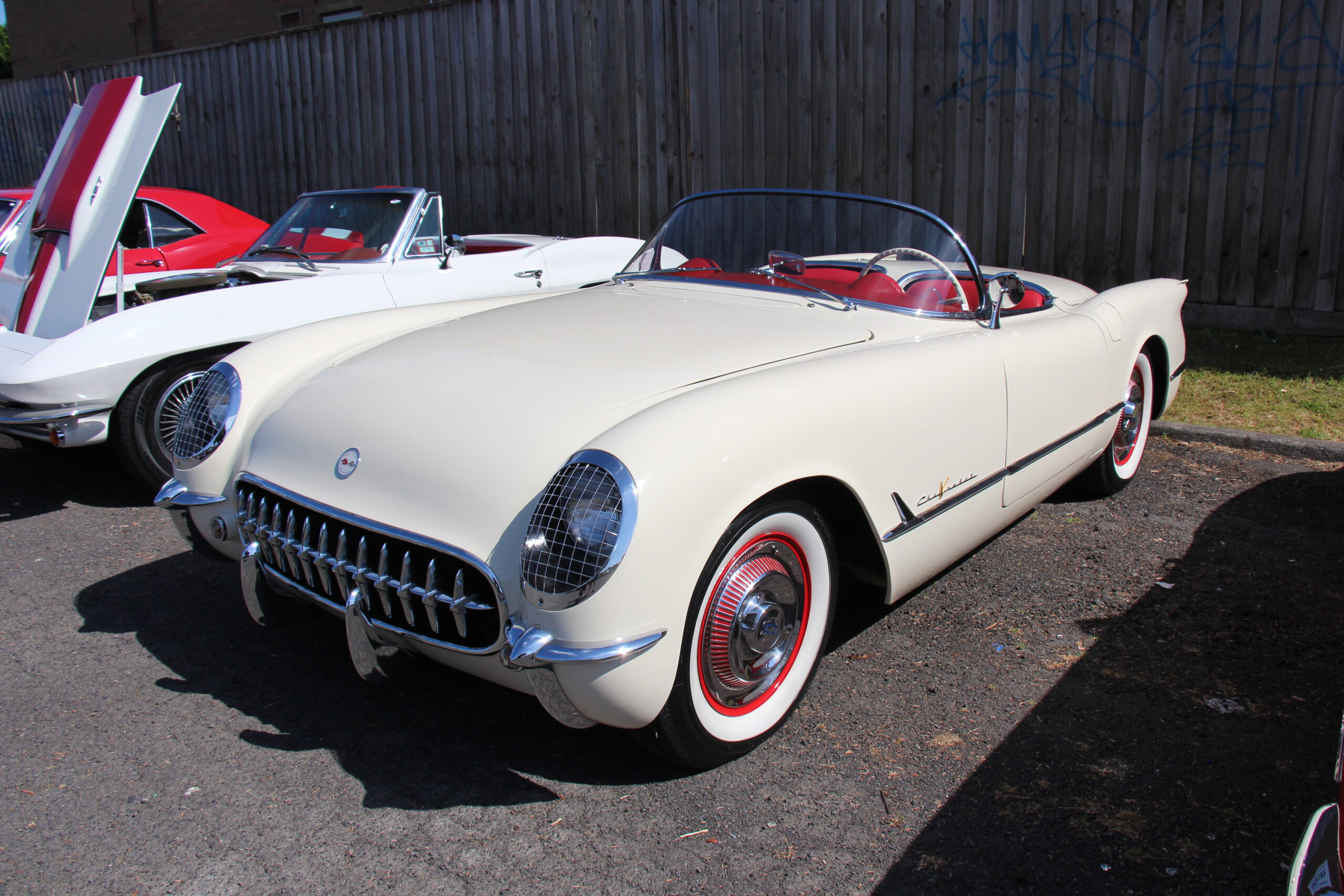1970 Corvette LT-1: The Balanced Beast
The 1970 Corvette LT-1 emerged during the muscle car era, a time when horsepower was king. Unlike its big-block siblings, the LT-1 was all about balance and finesse. With a 370-horsepower, 350-cubic-inch small-block V8, it offered a thrilling ride without the need for a massive engine. Enthusiasts knew that the LT-1’s official horsepower rating was somewhat of an understatement, as it likely produced closer to 400 horsepower. This model marked a transition point, just before emissions regulations started to clamp down on performance. Its legacy continues today, with the LT1 name reappearing in the 2014 C7 Corvette’s engine lineup. The LT-1 stands as a testament to the idea that power doesn’t solely rely on size.
1953 Corvette: The Birth of a Legend
The 1953 Corvette holds a special place in automotive history as the very first Corvette. Unveiled at the GM Motorama in New York City, it was an immediate sensation. While its mechanical components were far from revolutionary, the fiberglass body was a game-changer. This two-seater exuded American confidence, differing from the European sports cars of its time. Chevrolet quickly responded to the public’s enthusiasm, producing 300 units, all in Polo White. Though its performance was modest, the 1953 Corvette laid the foundation for what would become an iconic American sports car. The Corvette’s journey began here, and it was a promising start.
1957 Corvette Fuel Injection: Performance Maturity
With the guidance of Zora Arkus-Duntov, Chevrolet’s chief engineer, the 1957 Corvette marked a significant leap in performance. The introduction of Rochester mechanical fuel injection allowed the 283-cubic-inch V8 engine to achieve an impressive 1 horsepower per cubic inch. This innovation was a milestone in automotive engineering, setting the Corvette apart from its competitors. Of the 6,338 Corvettes produced in 1957, only 1,040 featured the “Ramjet Fuel Injection” system. A ’57 Corvette equipped with this system could sprint from zero to 60 mph in just 5.7 seconds, a remarkable feat even by today’s standards. This model was a glimpse into the Corvette’s future prowess.
1984 Corvette C4: A New Era of Capability
By the early 1980s, the Corvette needed a revival, and the C4 generation delivered just that. It shed the weight of its predecessors and embraced a sleeker, more modern design. The C4’s knifelike profile was matched by its improved performance capabilities. Although the initial “Cross-Fire Injection” 5.7-liter V8 engine was underwhelming, the C4 quickly proved its mettle in showroom stock racing. Its digital dashboard, reminiscent of a video game, added a futuristic touch. The C4 was a statement that Corvette was once again a serious contender in the sports car arena. It was a bridge between the past and the future, setting the stage for what’s to come.
1967 Corvette 427 L88: The Uncompromising Machine
The 1967 Corvette 427 L88 is a legend among muscle cars, known for its raw power and aggression. This model was designed for those who craved an uncompromising driving experience. Its massive Holley carburetor and aluminum heads hinted at its true potential, which many believed to be well above its official 430-horsepower rating. With only 20 units produced, the L88 was a rare gem. It required high-octane fuel and came without a heater or defroster, emphasizing its racing pedigree. The L88 was not just a car; it was a statement of automotive prowess, a machine that demanded respect and attention.
1997 Corvette C5: The Balanced Performer
The 1997 Corvette C5 marked a turning point in the Corvette’s history, achieving a perfect blend of performance and comfort. Its all-new backbone frame and transaxle layout provided exceptional weight distribution, enhancing both handling and ride quality. The C5 introduced the LS1 V8 engine, an all-aluminum marvel that delivered 345 horsepower. It was a Corvette that could comfortably cross the country or dominate a racetrack. With its refined engineering, the C5 set new standards for what a Corvette could be. It was a car that appealed to both thrill-seekers and long-distance travelers, embodying versatility in the sports car world.
1955 Corvette: The V8 Revolution

The 1955 Corvette may not have looked drastically different from its predecessors, but it introduced a game-changing innovation: the V8 engine. This marked the Corvette’s transition from a stylish roadster to a true sports car. The small-block V8, with its 265 cubic inches, delivered 195 horsepower, transforming the Corvette’s performance capabilities. While it wasn’t the fastest car on the road, the 1955 Corvette laid the groundwork for future high-performance models. It was a pivotal moment in Corvette history, proving that a compact, powerful engine could redefine the sports car experience.
2009 Corvette ZR1: The Supercar Slayer
The 2009 Corvette ZR1 was a remarkable achievement in automotive engineering. With a supercharged 6.2-liter V8 engine producing 638 horsepower, it was capable of astonishing speed and acceleration. The ZR1 could reach 60 mph in just 3.5 seconds and had a top speed exceeding 200 mph. Despite its supercar performance, it remained a practical daily driver. Its six-figure price tag was justified by its ability to outpace far more expensive rivals. The ZR1 was a testament to Chevrolet’s commitment to pushing the boundaries of performance while maintaining everyday usability. It was a Corvette that could do it all.
1990 Corvette ZR-1: The High-Tech Marvel
The 1990 Corvette ZR-1 introduced cutting-edge technology with its Lotus-designed LT5 V8 engine. This 32-valve powerhouse delivered exhilarating performance, with the ability to break traction even at high speeds. Its impressive acceleration and midrange punch made it a formidable contender on the road. The ZR-1 was the only factory Corvette to feature an overhead-cam engine, setting it apart from its predecessors. While newer models have surpassed its performance, the ZR-1 remains a symbol of innovation and excellence. It was a glimpse into the future of high-performance Corvettes, and its impact endures to this day.
1963 Corvette Fuel-Injected Coupe: The Iconic Beauty
The 1963 Corvette coupe is an automotive masterpiece, celebrated for its timeless design and engineering prowess. Its split rear window and distinctive styling made it an instant classic. Underneath its stunning exterior, the C2 generation introduced an all-independent suspension, enhancing both comfort and performance. The 327-cubic-inch V8 engine, equipped with Rochester mechanical fuel injection, delivered 360 horsepower, making it a formidable competitor on the track. The 1963 Corvette was a statement of American ingenuity, setting a standard that continues to inspire Corvette designs today. It remains an icon of automotive excellence, captivating enthusiasts and collectors alike.





